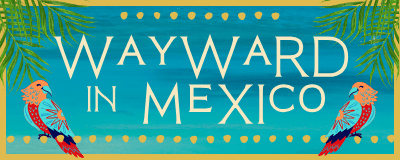Is Tulum Worth Visiting in 2024?✨Local’s Pros & Cons✨
Wayward in Mexico contains affiliate links. If you make a purchase using one of the below links, I may receive compensation from the company at no additional cost to you. Read my privacy policy.
ARE YOU TRYING TO DECIDE IF TULUM WORTH VISITING IN 2024?
I’ll cut to the chase: not only is Tulum worth visiting in 2024, like me, you may want to stay a while.
Tulum is a tropical paradise with warm weather, shining skies and mostly calm seas year round. You could spend a week here doing absolutely nothing but lying seaside and that would be time well spent. But! Tulum has so much more to offer.

Indulging in authentic Mexican flavor, rich culture, and vibrant nightlife are just a few ways to spend your time here in Tulum. Adventure enthusiasts will want to jump into a magical cenotes (fresh-water natural swimming holes) or observe rays and turtles while snorkeling.
I live in Tulum, and I have learned to embrace Tulum’s magic while avoiding some of its unpleasantness. I’ll share a list of pros and cons to help you do the same.
Without further ado here are the…
Pros & Cons of Visiting Tulum in 2024
Pros & Cons of Tulum’s Beaches
1. PRO: Beautiful Beaches
The allure of Tulum lies in its inviting soft white sand and pleasantly warm turquoise water. There are approximately 6.5 miles (10.5 kilometers) of coastline between Tulum’s Mayan Ruins on its northern edge to the entrance station to the Sian Ka’an Biosphere on its south edge.
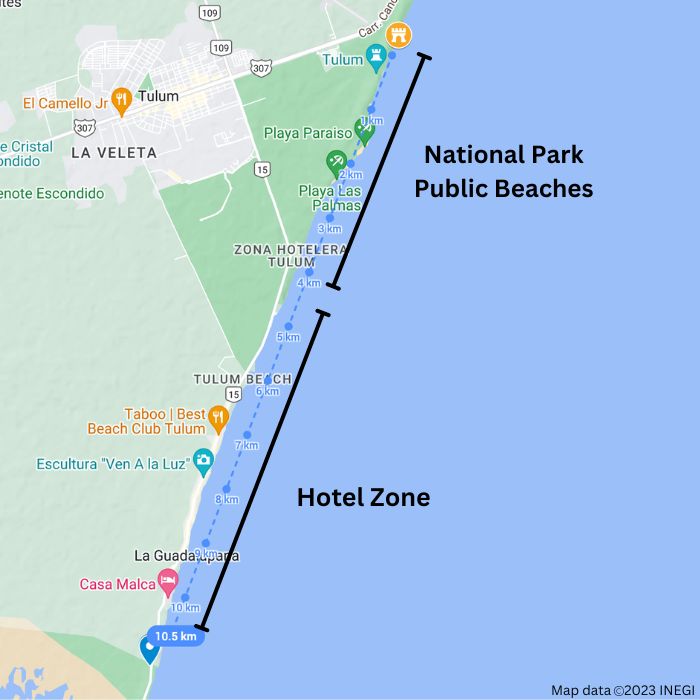
Hotel Zone Beaches
The Hotel Zone fronts Tulum’s longer southern stretch of beach between Hwy 15 (Coba) and the Sian Ka’an Biosphere entrance station. Locals refer to sections of the beach by the hotel that services it. Each hotel has a beach club with a restaurant with its own flavor of relaxation and indulgence.
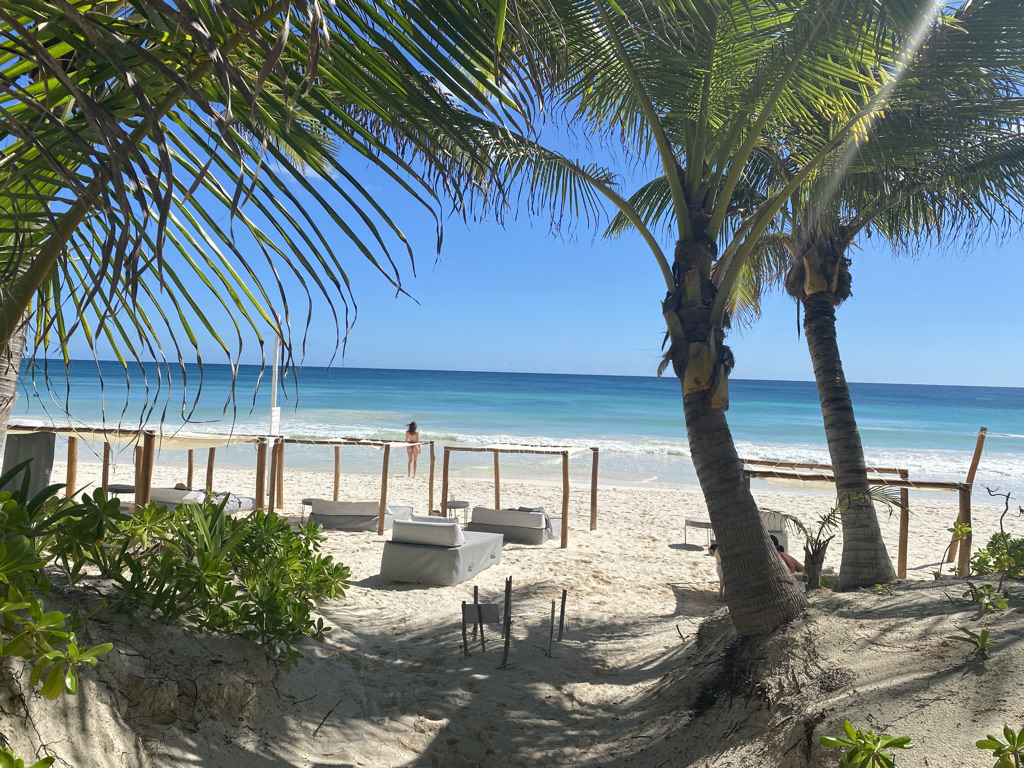

National Park Beaches
The public beaches are on the northern end of Tulum’s coastline. From north to south, the beaches are Playa Santa Fe, Playa Pescadores, Playa Maya and Playa Paraiso. These run contiguously on the same stretch of sand.

As of November 28, 2023, access to Tulum’s public beaches improved dramatically.
For most of 2023, the stretch of beach from the ruins to Hwy 15 (Coba) had been closed except for foot and bike traffic from the ruins parking lot only. Officials closed the area in order to expand Jaguar National Park to include 3km of additional coastline and a huge swath of jungle home to subterranean waterways and cenotes.
The entry fee for the national park is 58 MXN (3.50 USD) for tourists and free for Tulum locals with ID. You get a dated wrist band so ostensibly you can leave and re-enter as much as you want.
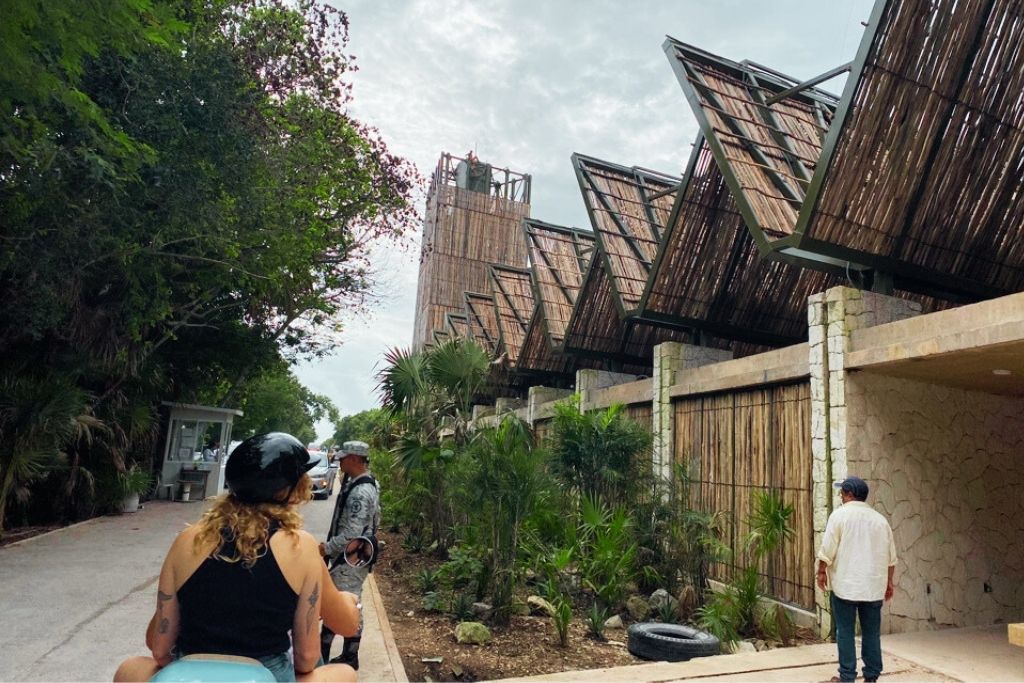
The cost to park a scooter is 100-150 MXN (6-9 USD). The cost to park a car is 200-300 MXN (12-18 USD). Bike parking is free. The cheapest lots are the first along Playa Paraiso and last at Playa Santa Fe.
There is a bike rental station at the southern entrance of the National Park. On average, the beach club restaurants in the national park require a minimum consumption of 500 MXN (30 USD). The amount is payable upon entry and includes parking, table service and beach bed use for the restaurants that have them.
2. CON: Tulum’s Hotel Zone Beaches Are VERY Expensive
Tulum’s hotel zone beach clubs, on the southern stretch of its coastline charge a day pass and/or minimum consumption per person. During the high season from mid-November to March, the cost of a day pay pass or minimum consumption is steep. For example, Hotel Lula (formerly Sanará) on the southern end of Tulum Beach charges 1000 MXN (58 USD) for a day pass which includes use of their beach beds and towel service. Food or drinks from the restaurant are in addition to the day pass fee.
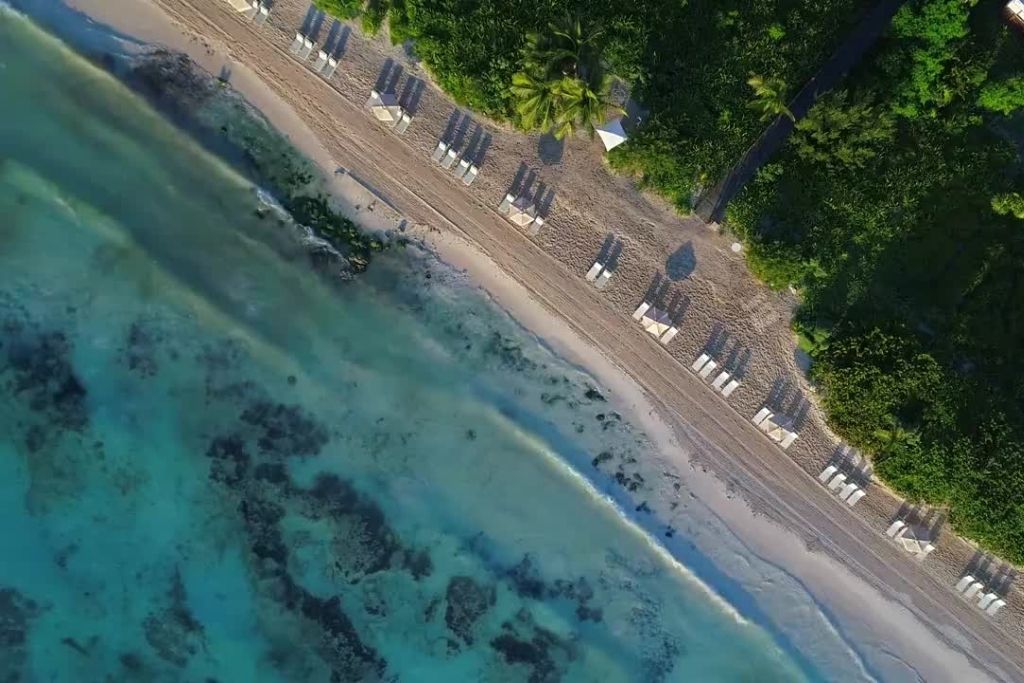
Arguably Tulum Hotel Zone’s fanciest beach club, Casa Malca is housed inside the former mansion of the cartel king, Pablo Escobar. Currently, during high season, a day pass here is a whopping 3000 MXN (174 USD) per person. This does include a 2000 MXN (118 USD) food and beverage credit, use of the pool, and beach bed use.
3. PRO: Prices Are Lower in the Low Season
During Tulum’s low season April through early-November annually, beach club prices drop substantially. For example, Ziggy’s, in the middle of the hotel zone, requires a minimum consumption of 50 USD per person for day use of their beach beds.

When we visited in mid-October, we spent more time swimming than eating and drinking. We spent about 35 USD per person. They didn’t charge us the remainder and provided great service anyway. Ziggy’s has an amazing burger, by the way. By comparison, Ziggy’s minimum consumption during high season is 70 USD per person, 40% more.
4. PRO: Tulum has a FREE Beach
Playa Mirador is Tulum’s one and only completely free beach (no cost for parking either). It sits between the Hotel Zone and the National Park. You can get there by turning right onto the coast road from Hwy 15 (Coba) or left onto the coast road from Avenida Kulkulcan.
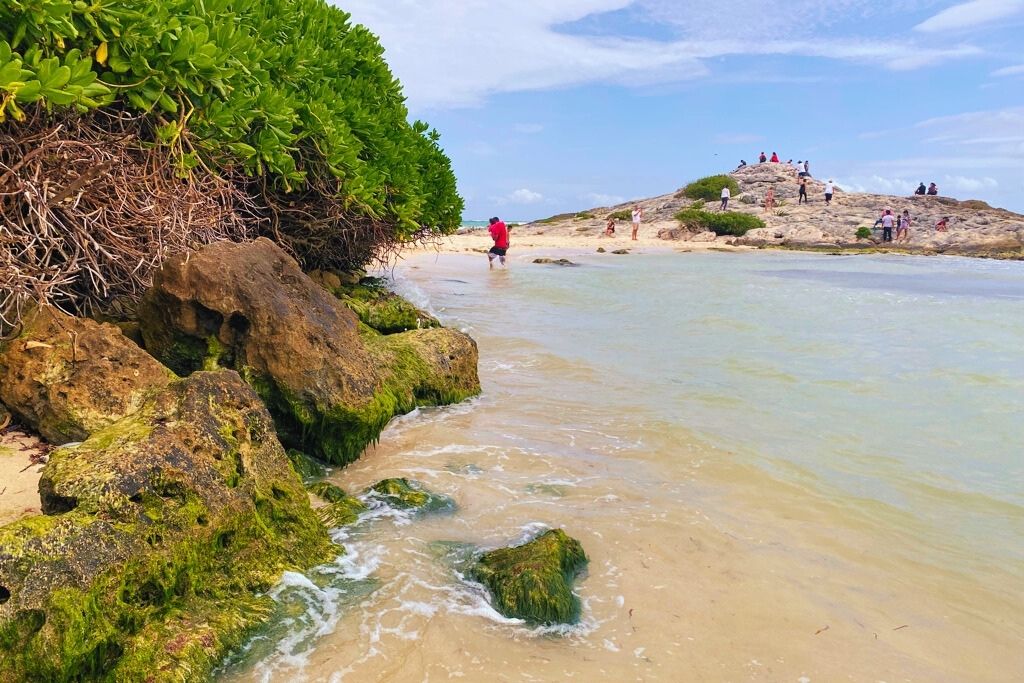
Playa Mirador is a bit of a mixed bag. It was the very first beach I went to the morning after moving to Tulum and I was enchanted. The seas were calm. The water was turquoise and warm and the abandoned hotel projects along its southern end were fascinating.
Playa Mirador is the only public beach you can access anytime without much hassle. Depending on tide, it can be rocky or entirely without sand.
On a subsequent visit, the rocks were exposed and the waves were bigger making it too dangerous to swim. During seaweed season (February or March through July or August, annually), Playa Mirador is especially hard hit. It’s a narrow beach and the water gets deep quick which is likely what makes it susceptible to be overrun. Even when most of Tulum’s beaches are free of seaweed, Playa Mirador has some.
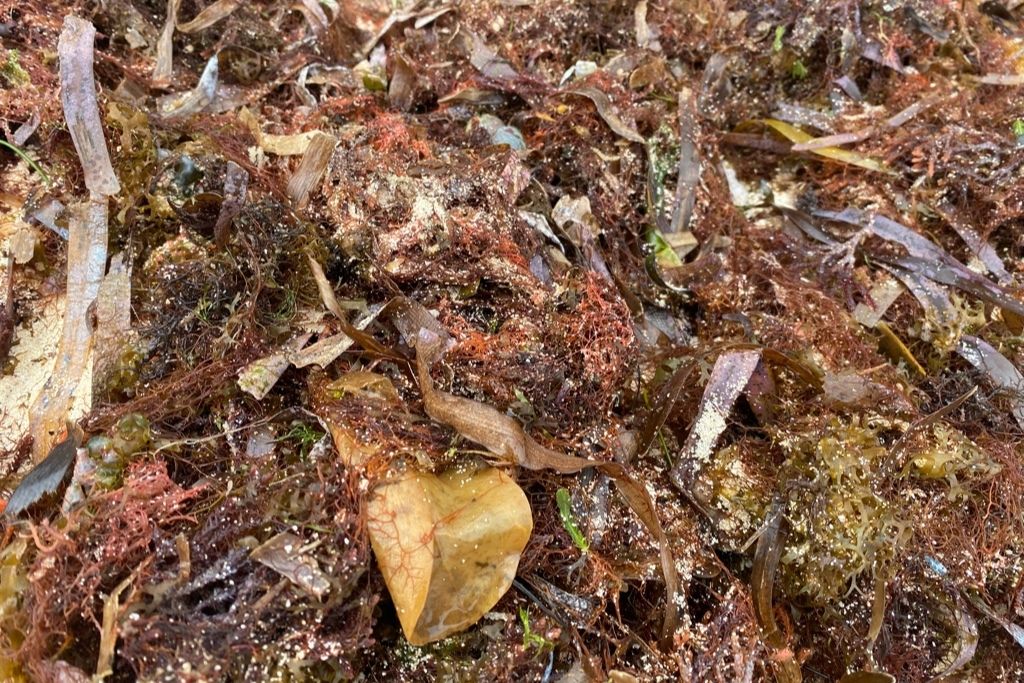
Bottom line, it’s free and easy to check conditions here. Drive by and see if it’s a good day to swim.
5. CON: Seaweed Season
Seasonally, usually around March, a gigantic seaweed forest migrates to the Riviera Maya and its surrounding areas. When it’s at its peak, it ruins the beach. The seaweed smells awful as it rots in the sun ashore. The brown kelp muddies the beautiful aqua water.

Fancy hotels take Herculean strides to clear the seaweed for their guests. It’s a bit of a mystery where it all goes.
Seaweed season lasts into summer.
Unfortunately in 2023, seaweed season came early. By late-February, the beaches were no longer swimmable. We took that opportunity to visit more nearby cenotes. But best not to plan your trip during seaweed season if you can help it.
Pros & Cons of Things to Do in and Around Tulum
6. PRO: The Awe-Inspiring Tulum Mayan Ruins
Tulum is home to beautiful ruins that were built by the Mayan people to mark the city’s importance as a trading post and religious center. Tulum’s original people traded cotton, cacao and copper until they were run out by the Spanish conquistadors in the 16th century. Read more about the history of the ruins here at worldhistory.org.

Built on a cliff directly on the ocean, the ruins are largely intact. You can admire the low doorways (people of Mayan ancestry, both ancient and living today, are shorter than average), ornate frescos and iguanas who rule the kings and queens of the ruins now.

My partner Dorian grew up in Tulum. In the 1990s, he and his mom and sisters used to picnic on the ruins and swim all day on the beach below. Most days they had the place to themselves.
Now, the ruins are a busy national park and charge 58 MXN per person for entry not including parking. Ropes prevent you from climbing the stone structures. The beach below has been closed for swimming for a couple of years. Rumor has it that during COVID closures, turtles began nesting at the ruins beach. Nevertheless, this place is majestic and it is definitely worth a stop on your visit.
7. PRO: Proximity to Other Beautiful Places
Tulum has direct routes via ADO bus to Bacalar, Playa del Carmen (from which you can get on the ferry to Cozumel), Valladolid, Chichen Itza & Cancun (from which you can get a ferry to Isla Mujeres).

These are all worth visiting if you have the time.
8. PRO: Nearby Fresh-Water Cenotes
Cenotes (fresh water swimming holes) are one of the most magical features of the Yucatan Peninsula. Each is unique. Some are completely subterranean with stalactites and stalagmites others you can bask in the sun while you swim.
One of my cenotes is Cenote Santa Cruz which sits only 10 minutes west from Tulum on Hwy 15 (Coba). You can see turtles and fish in the crystal clear water.
There are snorkels and masks for rent as well as showers, a changing area and a small restaurant. There are several places to jump into the water from a height. Life jackets aren’t required here .

Another beautiful option, not far outside of Tulum is Cenotes Casa Tortuga, a collection of unique swimming holes accessible with one entry fee.
Cenotes are great way to enjoy the water on days when beach conditions aren’t optimal.
9. PRO: Amazing Food
Food is one of Tulum’s shining jewels, for sure. There’s plenty of killer vitamina t (vitamin T), the typical Mexican fare of taco, tortas, and tamales. There’s also delish seafood, yummy breakfast options, fresh juices and smoothies.
Best Tacos Place in Town: La Riviera Costeña on Tulum’s main road. It’s famous for tacos al pastor con piña y queso (pork tacos with pineapple and cheese). I mean, wow. The guacamole here is great too and a nice complement to the tangy tacos.

Best Breakfast: This is a tie between Babel and Botanica Garden Cafe, both in Centro. Choose Botanica for a healthier breakfast and Babel if you want a heartier breakfast and to get a little work done while you eat.
Fresh In-Season Fruit Year Round
My favorite place to get fresh fruit is Frutas y Verduras Pool (pronounced pole) on Avenida Satélite Sur. Try orange juices from the cold case at Fruteria San Marcos on Calle Alfa Norte. To die for.

10. PRO: The Live Music Scene
Tulum is home to an especially robust live music scene for a city of its size. My partner, Dorian, and I are professional musicians here in Tulum.
The most famous venue for live music is Batey Mojito’s Bar which boasts live music 6 nights per week. Enjoy a freshly-crushed cane sugar mojito while enjoying an acoustic show at 7pm and a full band at 9pm.

La Guarida on Calle Orion Sur is a beautiful maze-like bar with great food, live music and a magical ambiance.

Other Live Music Spots to Visit:
11. CON: Electronic Music
Electronic music is not my bag and, in Tulum, it’s easy to find. If you like electronic music, this is actually a pro.
12. PRO: Self-Improvement Opportunities
Tulum has become a mecca of shamans and healers, ayahuasca and DMT ceremonies, yoga, sound healing and ice baths. If you want work on self-healing intentionally, Tulum has lots of options.
Many of the ceremonies are offered are by well-intentioned and in some instances, gifted shamans in a beautiful setting. There is truly the opportunity to be changed for the better in Tulum.
13. CON: Performative Spiritualism
However, with the wheat, you also get the chaff. There is a fashion and fervor around vegetarianism, yoga, EDM parties in Tulum. Imagine a tanned and toned yogi dressed in nothing but macrame strings and tiny shorts practicing on the beach holding a 3rd-eye mudra appearing to be lost in serenity until you see his sideways glance toward you, his onlooker.

It’s like that. The name for this type of performance-based self-expression here in Tulum is tuluminati.
While claiming to be in touch with natural and their surroundings and their fellow community members, there are some obvious contradictions. Many tuluminatis are expats who party hard, don’t choose to learn Spanish, eat vegan, co-opt indigenous healing arts and stay silent while bulldozers crash through jungle to create another high-end apartment building for their luxury and convenience.
14. PRO: Natural Water Parks: Xcaret or Xel-Ha
Xcaret (esh-caret) and Xel-Há (shell-HA) are two natural water parks owned by the same parent company. With both entry prices are steep but they are both worth a visit in 2024:
Xel-Há
For 2200 MXN (129 USD) without a prior reservation and 1900 MXN (112 USD) booking at least 7-days in advance you get a complete day of snorkeling, cenote swimming, five all-you-can-eat buffets, all you can drink bars with sodas, beer, margaritas, piñas-coladas, zip-lining, tubing, water-slide, and hammocks to take a midday nap. The food is awesome! You see dolphins right when you enter the park. Swimming with them is extra.

Xcaret
Xcaret’s subterranean rivers, flamingos, bright red guacamayas (macaws), delicious buffets, history of Mexico nighttime show is in a word: gorgeous. Also, not cheap but definitely worth it. Get your tickets for Xcaret or Xel-Há here.
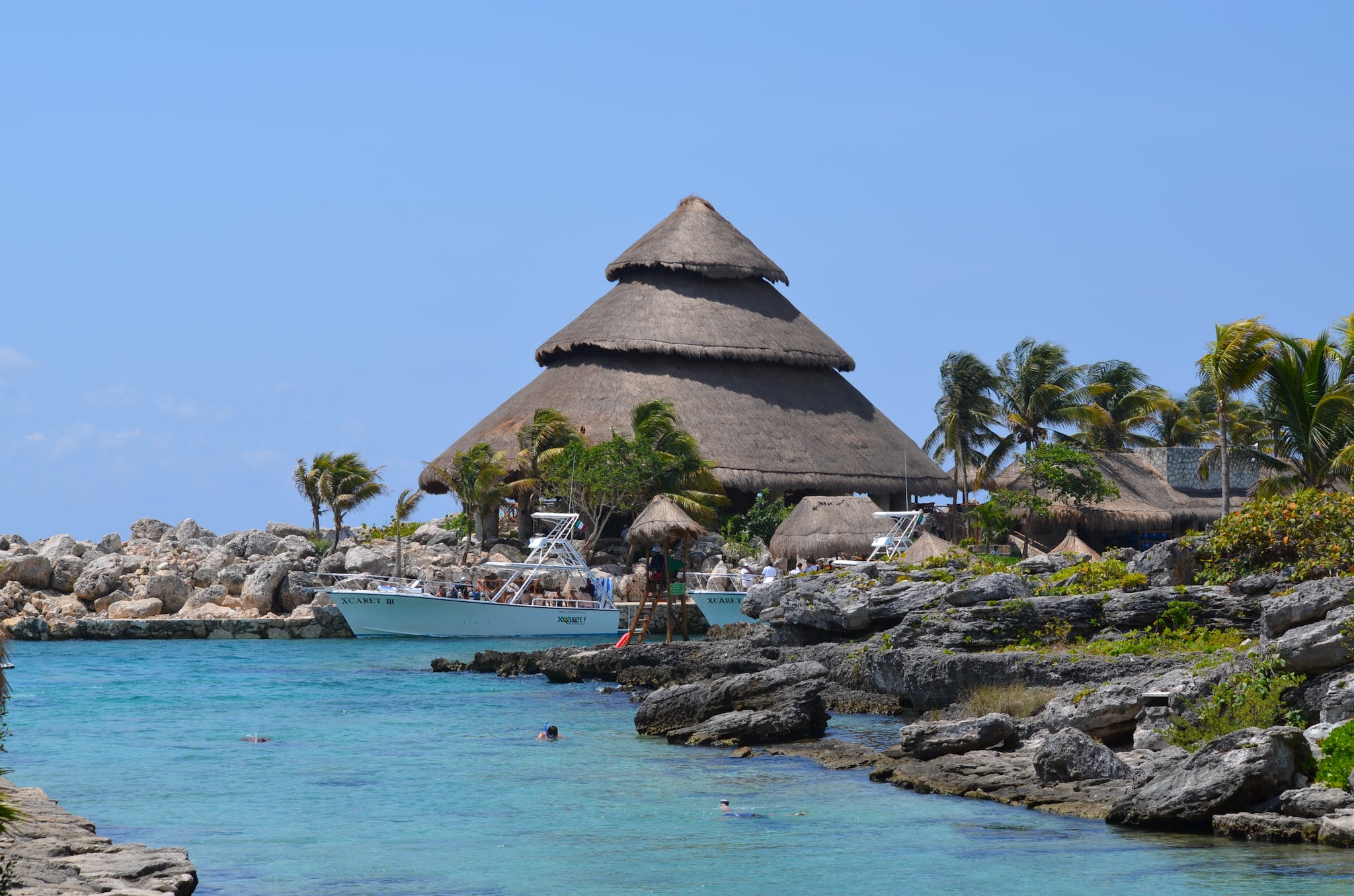
Pros & Cons of Getting Around Tulum
15. PRO: Easy Public Transportation
ADO Bus
There are two really great public transportation options in Tulum. My favorite is the ADO bus. The main terminal is in the middle of Tulum Centro.
ADO buses are super comfortable charter-style buses. They arrive on time almost always. The drivers are professional and have undergone lengthy training. Onboard, there is A/C, a bathroom, USB ports for your devices and the seats that recline.
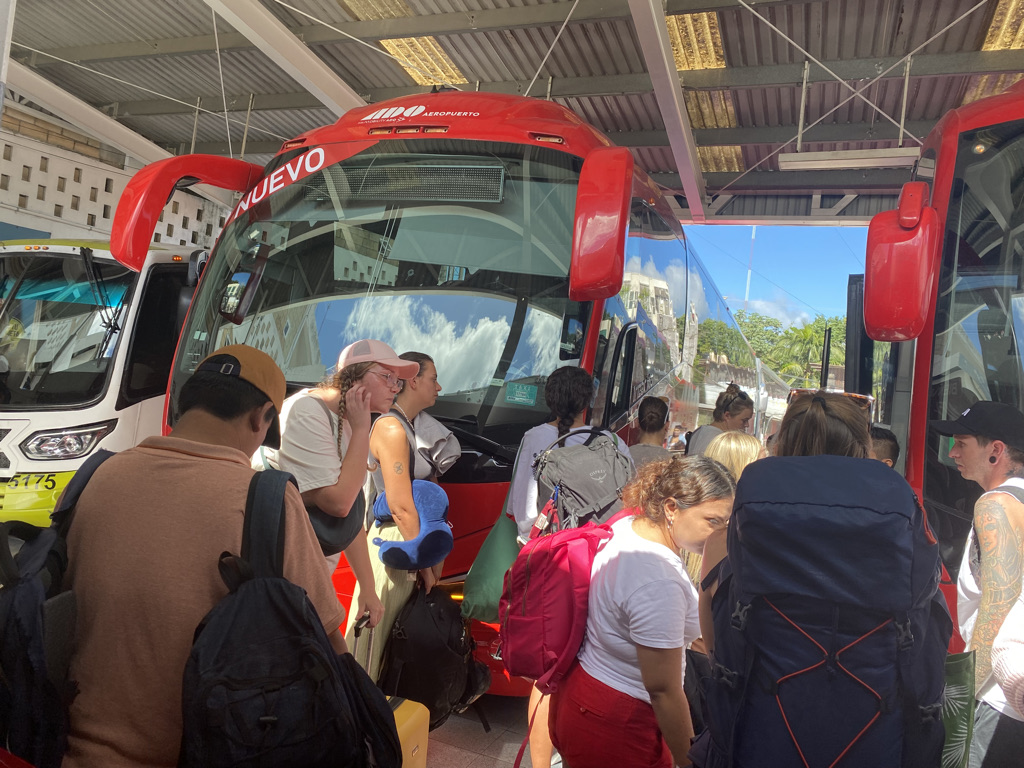
Arrive at the ADO station about 15 minutes before your departure time. You’ll hear the bus station attendants or drivers calling your destination and also hear it announced overhead. If you’re not sure if your bus has arrived, you can show your ticket to someone in a uniform. The station attendants and drivers are usually very helpful.
The buses sometimes depart a few minutes late but never leave early.
Once they’ve checked your ticket, store your luggage in the compartment below the bus, climb aboard and find your seat.
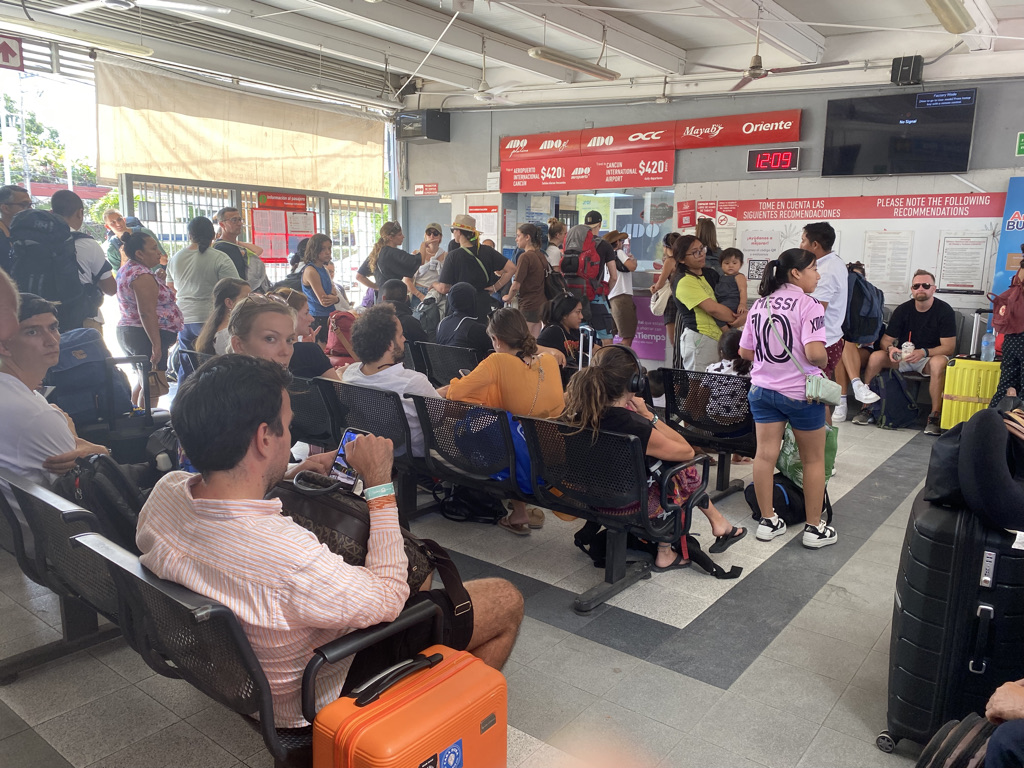
3 Ways to Buy ADO Bus Tickets
- On a Computer – Because the website is buggy when translated into English, I do not recommended this option unless you’re fluent in Spanish.
- At the ticket counter in the ADO bus station. This is not a bad way to get a ticket. The folks at the counter are fast and helpful but the line can be really long. See the photo above. That’s the line on the left.
- The mobile app. This is my personal favorite method to get an ADO bus ticket. The only drawback is the app can’t be translated from Spanish. No worries though! With the tutorial I provide below, you can easily use the app.
ADO Mobile App Tutorial
- Download the ADO Movil app for iPhone and Android.
- Open the app. Click Omitir to bypass the info from ADO.
- If you want a roundtrip ticket select the ida y vuelta tab. If you want a one-way ticket select solo ida.
- If you are starting out in Tulum, begin typing Tulum in the Origen box and select Tulum, Q.R. when it auto-populates.
- Then select Tulum, Q.R. (Todas las terminales).
- Type your desired destination in the Destino box.
- Select your desired destination when it auto-populates.
- In the Salida box, enter your desired travel date. Click Aceptar.
- If you’re booking a roundtrip ticket, in the Regreso box enter your return date. Click Aceptar.
- In the Pasajeros pop-up window, choose the number of tickets you need and whether they are adultos (older than 12 years) or ninos (infants and kids under 12). Click Confirmar.
- Then click Buscar Viaje.
- In the next window, select your desired travel time. Fares are non-stop unless otherwise stated.
- If you’re buying a roundtrip ticket, select your desired return departure time.
- Then chose a seat for Pasajero (passenger) 01. Click Siguente Pasajero if you are traveling with more than one person in your party. Continue this process until everyone has an assigned seat on each leg of your journey. Click Continuar.
- In the next window, enter the first name of the first passenger in the Nombre field. Enter the last name in the Apellido field. Repeat this for any other members of your party.
- Enter the email address where you want the PDF version of your tickets to be sent in the Enviar boletos a field.
- Re-enter your email address in the Confirmar el elivo de boletos a field.
- Agree to the terms & conditions. Click Continuar.
- Toggle Asistencia to gray to decline the medical transportation coverage. Keep on green if you want it in the case of an accident. I decline it even though it’s cheap. Click Continuar.
- Pay in the next screen with a credit card or PayPal.
- Agree to the electronic payment terms & conditions.
Whew! That’s it. In the screen you will see your purchase confirmation. The tickets are likely already in your email inbox but if not, screen shot the confirmation number and show it to the attendant at the ticket counter.
Side note: If you have an iPhone, don’t bother adding the tickets to your Apple Wallet. The wallet version of the ticket lacks the 12-digit operación number the driver uses to check your ticket with his passenger list. Instead show the email version of the ticket zoomed-in enough the driver can see the operación number and your seat number.
Colectivos
Another good public transportation option is the colectivo (shuttle bus). This is an excellent choice if your destination is not a location ADO stops but is along Highway 307, the primary north-south route in Quintana Roo.
Colectivos are very affordable.
Price comparison:
Playa del Carmen from Tulum on ADO bus takes 1 hour, arrives in the heart of downtown Playa and costs 250 MXN (15 USD).
The same trip on a colectivo takes 1.5-hours due to stops along the highway and costs 50 MXN (3 USD). The colectivo drops you just off the highway in the Chedraui grocery store parking lot and you will need to walk 15-20 minutes or take a taxi if your final destination is downtown Playa.
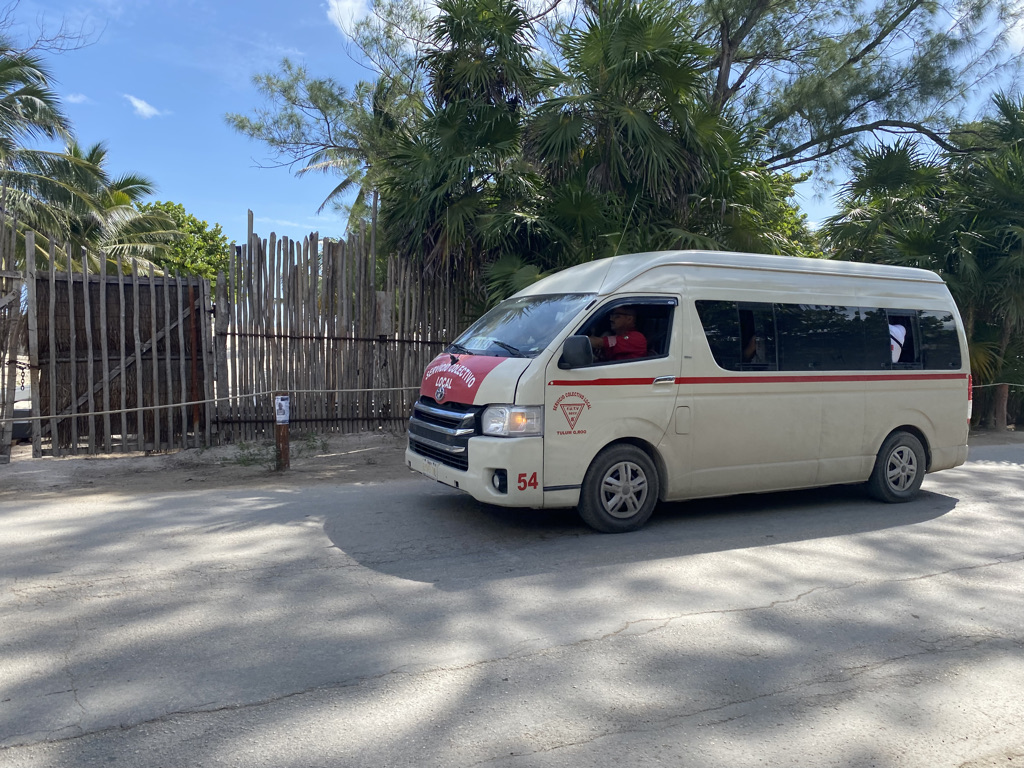
The colectivo 15-passenger vans are often cramped, with non-functional seatbelts and sporadic A/C vent performance. Local commuters frequently use the colectivo to get to work and home, so it makes many stops along the highway. When you board, the ground handler communicates your destination to the driver. But it’s still wise to use a map app on your phone. Map to your destination and, when the driver is within a half-mile, shout out your stop.
Exercise caution on the highway when dropped off or waiting to be picked up. If it’s dark, use the flashlight app on your phone to signal the colectivo driver that you want to be picked up.
16. CON: Entitled Taxi Drivers
There is no Uber in Tulum. More than a year ago, Uber made an attempt to test Tulum as a market. However, there were violent clashes between Uber and taxi drivers who did not welcome the competition for fares.

Technically, fares are supposed to be regulated. However, I have been quoted significantly different fares for the same ride on different occasions. Some taxi drivers are upfront and honest. Others feel entitled to take advantage of the rider’s need and charge exorbitant fares.
Because I never know which type of driver I’m going to get when I hail a taxi, I use them as little as possible.
Alternatives to Taking a Taxi
Alternatives include renting a car or scooter in Tulum. If you’re going to rent a car, use Discover Cars. Their insurance program (7-10 USD per day) beats the price of any policy you’ll get from a rental car company here.
Unlike the US, where you can decline the insurance in favor of using the rental coverage on your home policy, purchasing rental insurance in Mexico is required.
A drawback of driving yourself is parking at your destination. This can be a pain but stick to the white curbs for unlimited parking.
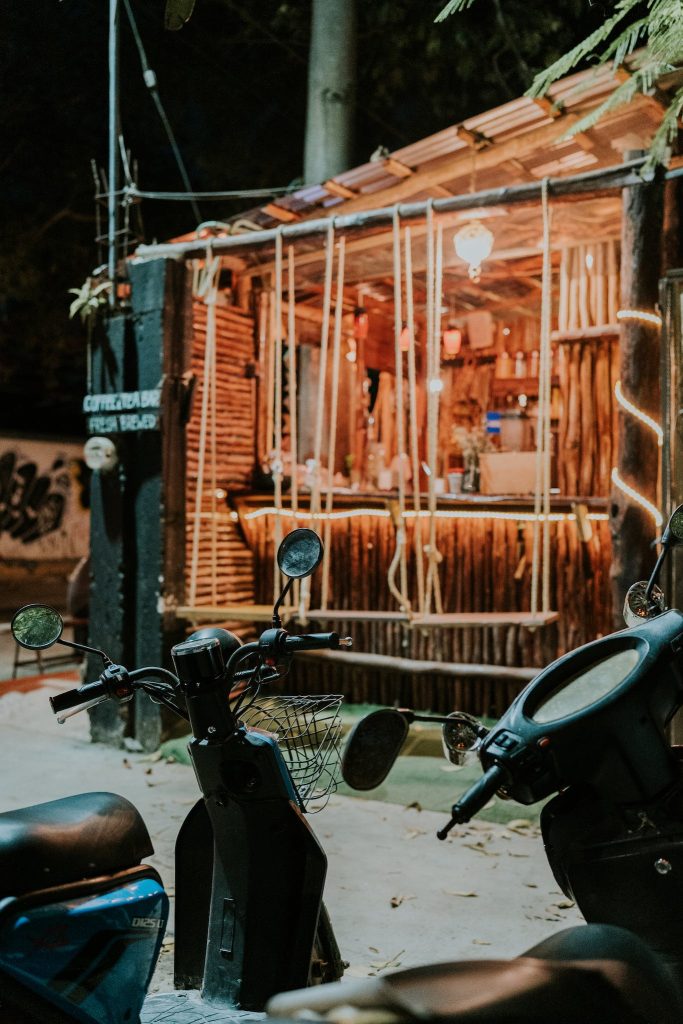
My favorite mode of transportation in Tulum is a motoneta (scooter or moped). 🛵
It’s easy to park, you can fill the tank for less than 100 MX (6 USD) and it’s crazy easy to navigate in traffic and on pot-hole ridden roads.
Bottom line: avoid taxis except cases when you are in urgent need.
17. PRO: Mayan Train & Tulum’s New Airport
December 1, 2023 marked the opening for Tulum’s own international airport: Felipe Carrillo Puerto International Airport. Learn more about Tulum Airport on their website.
The Mayan Train is a HUGE infrastructural project for the Yucatan Peninsula. It’s a train that will run in 6 sections from Campeche to Bacalar in a large loop stopping in Mérida, Cancún, Playa del Carmen and Tulum. It’s still under construction but there are plans for the first routes to be up and running soon.
18. CON: Traffic, Road Closures & Infrastructure Projects
It’s uncanny: when Tulum’s high season begins to crest and the roads are most congested, the municipality closes streets for major construction projects. Maybe this is because projects get delayed for rain in October and November, the tail-end of storm season.

4 Additional Reasons to Visit Tulum
19. PRO: The Weather
Tulum’s weather is beautiful year round. There are two distinct seasons: wet and dry.
| Seasonal Features | Wet Season | Dry Season |
| When | May-October | November-April |
| Avg High Temp | 89° F | 83° F |
| Avg Low Temp | 77° F | 70° F |
| Avg # of Days with Rain per Month | 13 | 6 |
| Avg % of Clearer Days per Month | 30% | 70% |
| Avg % of Cloudier Days per Month | 70% | 30% |
The driest month in Tulum is February annually. The wettest month is September annually.

It is quite humid here year round. During dry season (Nov-Apr), it’s humid or very humid 80% of the time. During the wet season (May-Oct), it’s humid or very humid 100% of the time. There is always a way to escape the humidity. It drives me to the beach or a cenote and air conditioning is available widely at hotels, airbnbs and some stores. Also, moving from a dry climate to a humid one has been great for my skin! 🌟
20. PRO: Budget-Friendly
Yes, Tulum is more expensive than Cancún or Playa del Carmen. There’s a reason for this: Tulum is superior for the reasons I’ve listed here.
Year round, even in the height of tourist season, you can find great Airbnb stays in prime neighborhoods for half the price of a typical US city. For example, last January, I took myself on a mini retreat to an Airbnb in La Valeta, one of the best neighborhoods in Tulum. The stay was 48 USD per night, beautiful, clean with rooftop pool and other great amenities. I shudder to think what 48 USD per night would get me in the states. Bed bugs, for one.
Tulum, like much of Mexico, remains less expensive than most places in the US.
Trinkets and souvenirs are pricey in Tulum Centro. However, you can drive 15 minutes inland to Macario Gomez and buy beautiful handmade clothes and home decor for very cheap.

Also, unlike the states, if you know you’re being price-gouged, you can negotiate in Tulum. Many of the shops in Tulum Centro carry similar items. Visit a few to find the best price or tell the shopkeeper you know you can get the item cheaper elsewhere.
21. PRO: Can Learn & Practice Spanish
Yes, many hospitality employees in Tulum speak English. So, if you stick close to your hotel you can get away with not practicing speaking Spanish. But there are many restaurants and stores you’ll want to visit where no one speaks English. Some key phrases for shopping, dining and getting around include:

- Buenos días / buenas tardes / buenas noches – good morning (before noon) / good afternoon (before it gets dark) / good evening (after it’s dark)
- Dos, por favor – two, please
- Disculpe – excuse me, like to get someone’s attention before you ask a question
- amiga / amigo – friend (fem/masc). This is what you call waiters and store clerks here in Tulum.
- ¿Tienes _____ ? – do you have ____ ?
- Vamos a ordinar la/el ____ – we’re going to order the _______
- Para compartir – to share
- ¿Cuantos? – how much?
- Para llevar – to go
- Provecho – Enjoy, pronounced pro-becho. It’s polite to say to your companions or other diners if you’re walking by their table or you enter a space where people are eating.
- ¿Todo bien? – Everything all good?
- Disculpe. Necesito una tenedora / una cuchara / un cuchillo – Excuse me. I need a fork / a spoon / a knife
- ¿Algo más? – Anything else?
- Con permiso – excuse me or sorry, like if you need someone to make room or let you by. Say permiso for short.
- La cuenta, por favor – check, please
- ¿Con effectivo o tarjeta? – with cash or card?
- Hasta luego – see you later
- Nos vemos pronto – we’ll see you soon
If you’re serious about learning Spanish here in Tulum, I highly recommend Metzli Spanish School. Classes are in small groups in the mornings with great teachers. They provide coffee and water. Then you can practice what you learn while out on the town in the afternoons and evenings.
22. PRO: The Wildlife
Tulum is enveloped by lush jungle, housing a variety of wildlife. There are mighty jaguars and pumas and sea-dwelling turtles who nest in Tulum. The morning birdsong here is so beautiful and lively. The cuijas (geckos) find their way into houses and quietly eat bugs.

There are lesser-known animals that have been so fun to learn about. Tlacuaches (variety of opposum) move secretly among the trees to eye the best opportunity to steal cat food from houses.
Iguanas are ubiquitous where there is sufficient sun in which to bathe. You can reliaby see many at the ruins.
Crocodiles are visible from the bridge at Boca Paila in Sian Ka’an, the biosphere on Tulum’s south edge. Avoid taking a dip here.
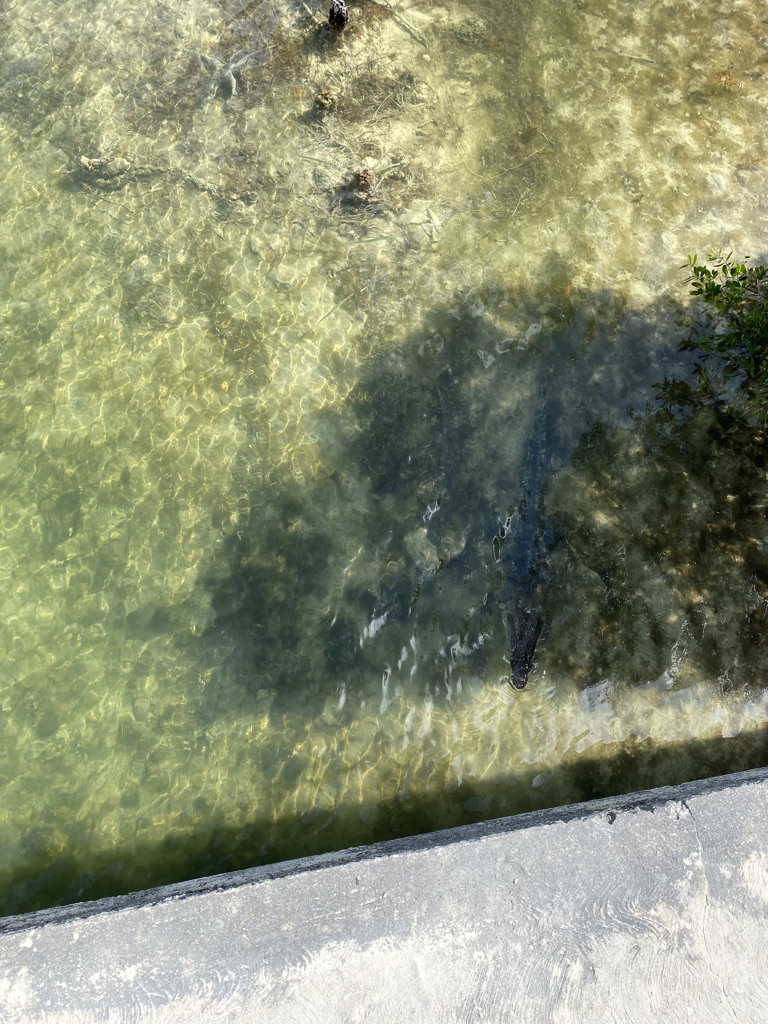
4 Additional Reasons to Think Twice About Visiting Tulum
23. CON: Cartel Violence and Police Presence
There are cartel-affiliated street drug peddlers outside bars and clubs in Tulum. It’s wise to think carefully about whether you want to support their business. They’re here in Tulum because enough tourists want to buy their product. They go where the money flows.
There have been clashes between rival cartels over turf in recent years. More than one innocent bystander has been injured or killed.
The cartel is very motivated to keep tourists coming to the area. They aim is not to hurt you. It’s to sell drugs to you.
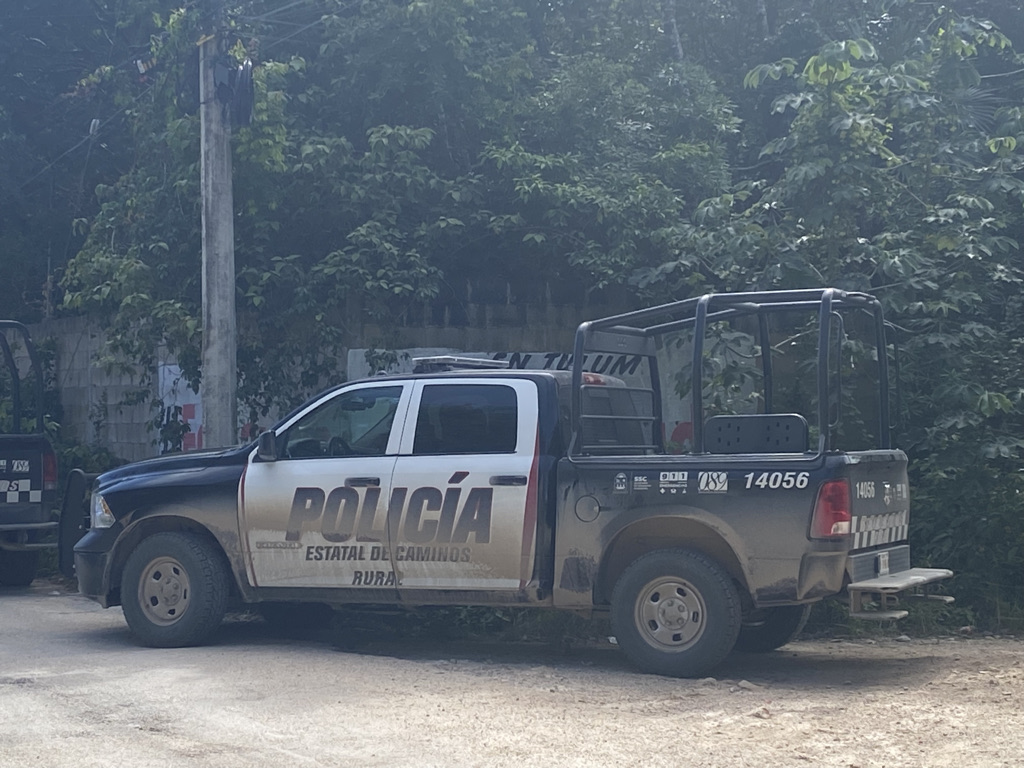
To combat cartel violence disrupting tourist activity, the government has mobilized lots of police to Tulum and her much larger neighbors, Playa del Carmen and Cancun. There are benefits and drawbacks of their presence. To read more about how to handle a conversation with police in Tulum, check out my post all about safety in Tulum.
24. CON: Power Outages and Spotty Internet
Tulum is undergoing rapid growth. This means higher demand on the power grid. There are also some major infrastructural projects underway in Tulum. These include major improvements to Tulum’s National Park, Felipe Carrillo Puerto Airport and Section 5 of the Mayan Train. Click here to learn more about the Mayan Train route. There are interruptions in power as lines are connected and disconnected related to the construction of the aforementioned.

There is no public announcement system in Tulum. Locals find out about power outages often by word of mouth and with little notice.
Lots of hotels have their own gas-powered generators. You can also expect less disruption in the hotel zone which is geographically removed from main areas of construction.
25. CON: Construction & Destruction
There are beautiful brand new apartment buildings and condos going up all over Tulum. Next to the spanking new developments, it’s common to find pockets of jungle overrun with trash. Sometimes it looks as if during the construction process they just dumped garbage over the ornate garden wall.
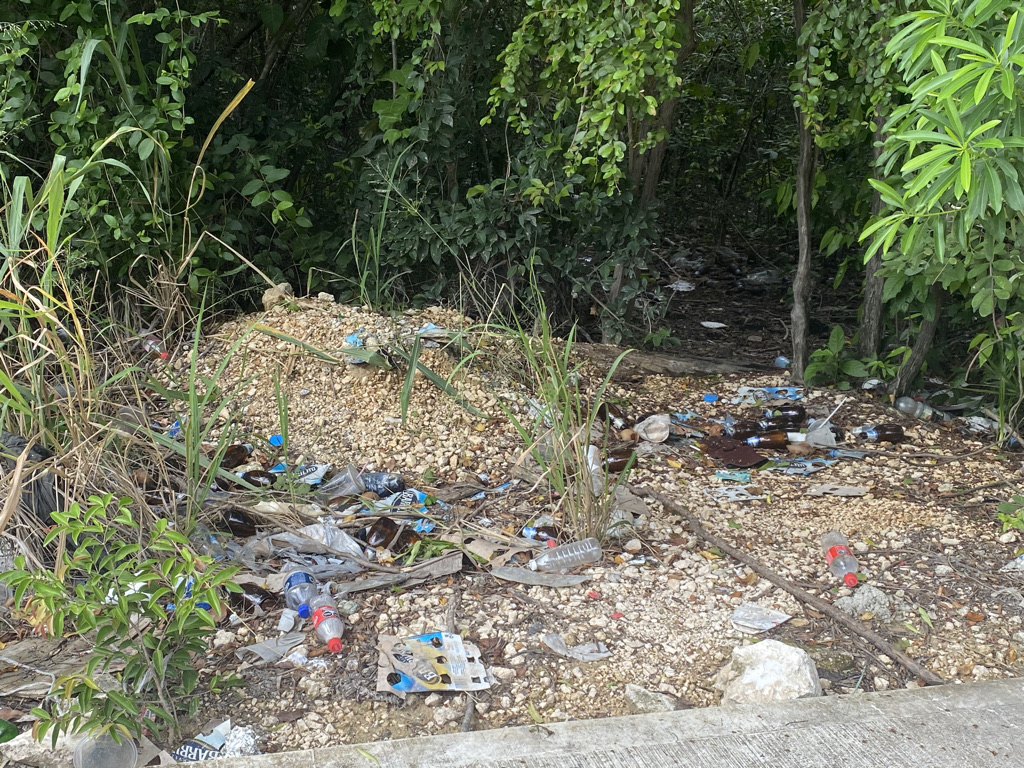
Most places in Tulum don’t recycle. There are bins in a few places in town but most plastic ends up in the trash.
26. CON: It’s Not as Great as It Used to Be
Tulum is experiencing exponential growth. There is construction everywhere. Anyone who was here even 5 years ago, reminisces about the “good old days” when Tulum was sleepier.

Tulum is growing because there is the tourism to support its growth. The word is out: Tulum is magical. Tourist-related business, while seasonal and still recovering from the impacts of COVID-19 closures, is booming.
Where is Tulum?
Tulum is in the state Quintana Roo in southeast Mexico on the eastern side of the Yucatan Peninsula. This region is know as the Mayan Riviera and also includes Cancun and Playa del Carmen. The major airport that services Tulum is Cancun International Airport.
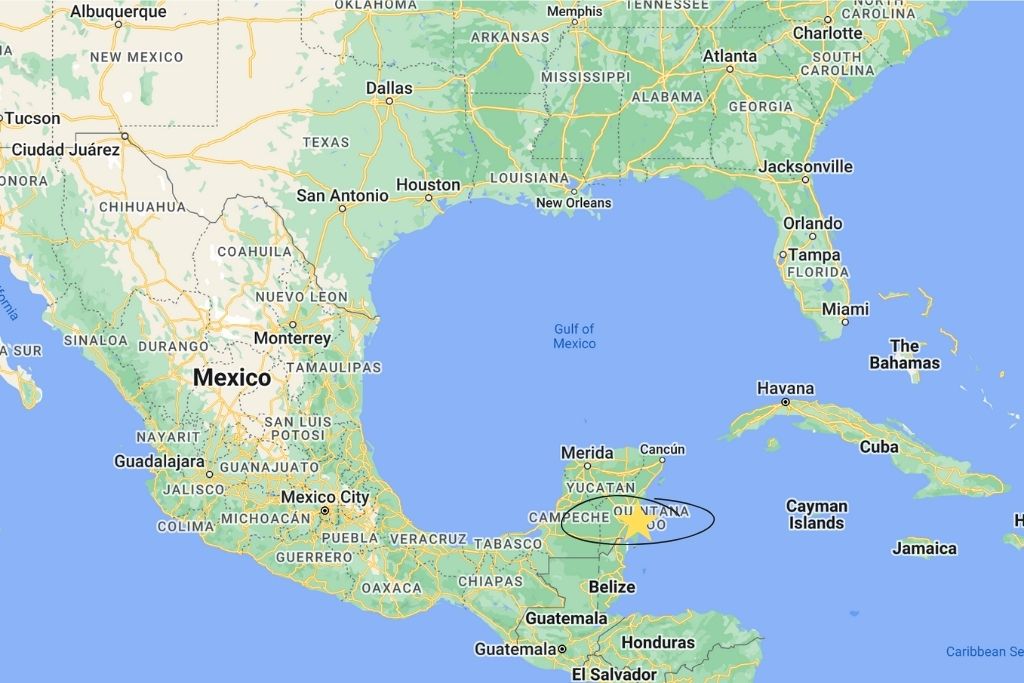
Best Time to Visit Tulum
Tourist traffic and prices peak December through March annually. Prices will be higher but still reasonable by comparison to the US or Europe, for example.
The best months to visit Tulum for premium ocean conditions and lowest prices are September and October.
Seaweed season is March-August annually but these are just estimates. In 2023, seaweed season began in early February and worsened until the beaches were no longer usable by the end of that month. If you’re an avid beachgoer like me, plan to come to Tulum September-January to be safe.
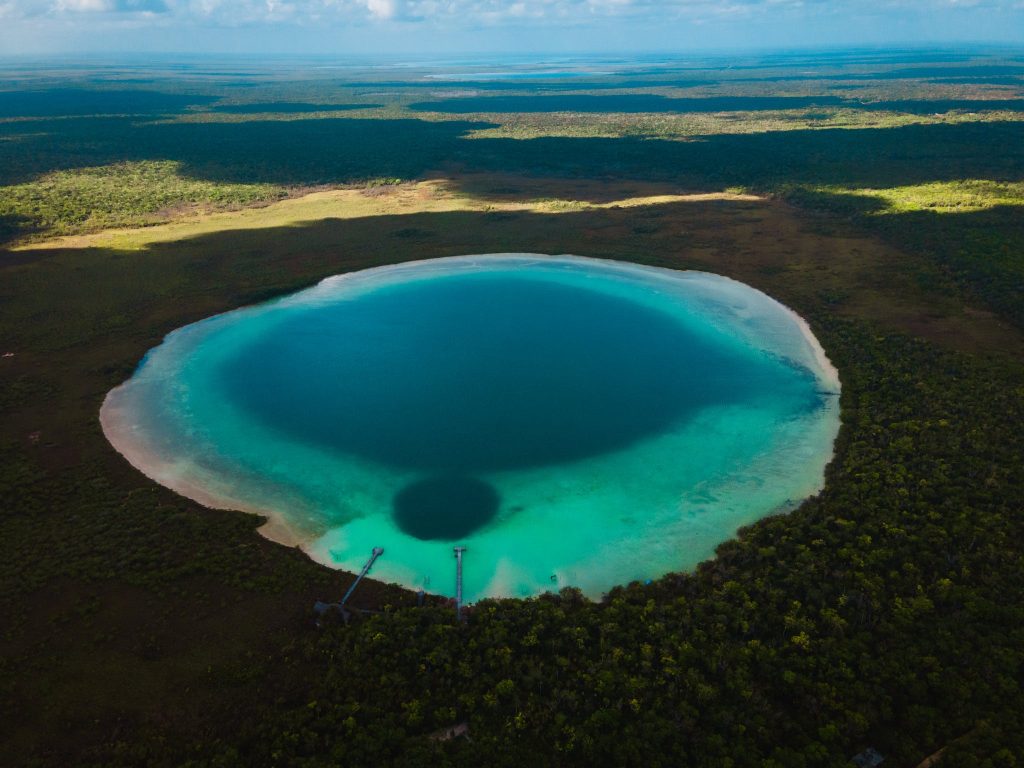
Tulum FAQs
Is Tulum Safe?
Overall, yes, Tulum is safe for travelers in 2024. In order to maximum your fun and minimize your risk, read my post all about safety in Tulum.
How many days should I spend in Tulum?
I came for a visit and ended up staying, well, forever. I would recommend at least 4-5 days of designated beach time, and 4-5 days taking day trips from Tulum. So a minimum of 8 days.
Conclusion: Is Tulum Worth Visiting?
Yes, Tulum is worth visiting. Yet, everyone should weigh the the pros and cons for themselves. If you plan your time here wisely, highlighting the best Tulum has to offer and avoiding the less than pleasant stuff, you’ll be sure to fall in love with this sweet historic town on the sea, as I have. Nos vemos pronto! (we’ll see you soon).
So you know the pros and cons of visiting Tulum. You may be wondering if Tulum is safe for travel. Read my post all about safety in Tulum.
